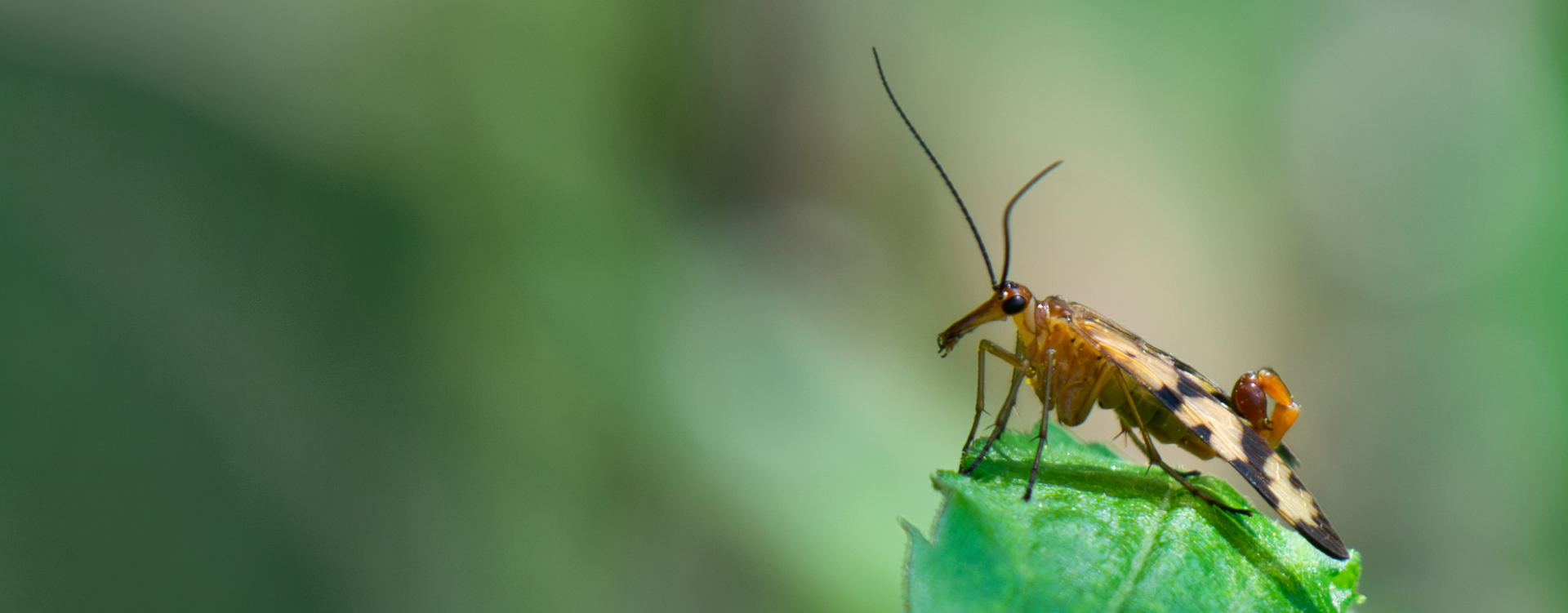
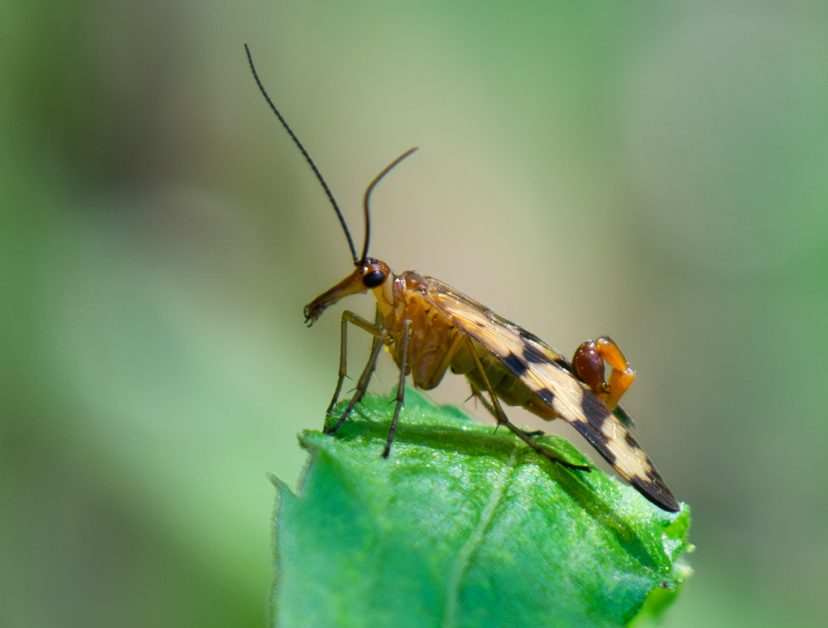
Restoration Initiatives:
Protecting Local Ecosystems
Restoring the Field Station
Restoration Initiatives:
Protecting Local Ecosystems
Protecting Local Ecosystems
Since its purchase in 2014, the Fondriest Center for Environmental Studies, also known as the Field Station, has been the site of many local restoration initiatives. While parts of the surrounding area have been taken by urbanization, the Fondriest Science and Naturalist teams are working together to preserve and restore the local ecosystems found at the field station, including the wetlands, pond, and forest environments.
Learn more about the various restoration projects conducted by the Science and Naturalist teams below!
Learn more about the various restoration projects conducted by the Science and Naturalist teams below!
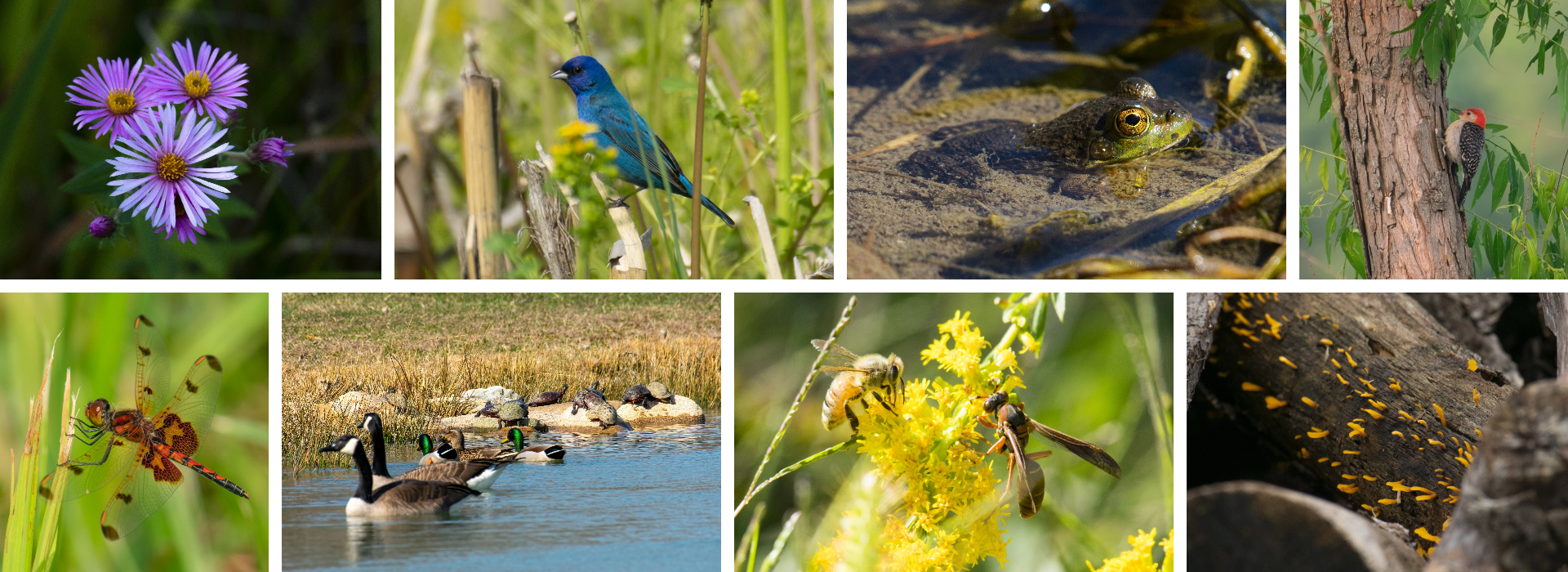

Species Documentation
Species Documentation
In order to protect and conserve local biodiversity, knowledge of what flora and fauna are found on the property is a key factor when deciding what restoration initiatives to pursue. For example, the presence or absence of indicator species is considered a great indicator of the health of an ecosystem, and can be a sign that further monitoring or restoration is required. Additionally, identifying invasive species can spark an invasive species removal initiative to protect the native species they threaten.
At the Fondriest Center for Environmental Studies, an ongoing project to photograph and document every species is underway, with nearly 500 species identified so far. Research is done to fully understand the role each species plays in the ecosystem, as well as how they are impacted by both natural and human-caused changes in their environment.
At the Fondriest Center for Environmental Studies, an ongoing project to photograph and document every species is underway, with nearly 500 species identified so far. Research is done to fully understand the role each species plays in the ecosystem, as well as how they are impacted by both natural and human-caused changes in their environment.

Protecting Native Species
One of the biggest threats to biodiversity and natural ecosystems is the spread of invasive species through both purposeful human cultivation and accidental establishment. While these species often thrive in their new environments, invasive species choke out and steal resources from the locals, leaving them without the space and essentials nutrients needed for survival.
At the Fondriest Center for Environmental Studies, the science team has been working on removing non-native and invasive plants across the property, including Amur honeysuckle, one of the most invasive plants in Ohio. Species such as this limit native plants from being able to spread and survive, which is not only concerning for the native plant populations, but also the animals that rely on those plants for food, habitats, and more. Many animals depend on resources from specific host species, such as monarch butterflies and their host plant milkweed, so losing one species puts other species at risk as well.
To combat the loss of local plant-life over the years, the science team has planted native flowers, trees and other plants to help bring back the biodiversity and provide more resources for the local wildlife. In addition to natural food sources and shelter for these species, man-made structures have been built and maintained to provide homes for species such as Eastern bluebirds, barred owls, fish and many other species.
At the Fondriest Center for Environmental Studies, the science team has been working on removing non-native and invasive plants across the property, including Amur honeysuckle, one of the most invasive plants in Ohio. Species such as this limit native plants from being able to spread and survive, which is not only concerning for the native plant populations, but also the animals that rely on those plants for food, habitats, and more. Many animals depend on resources from specific host species, such as monarch butterflies and their host plant milkweed, so losing one species puts other species at risk as well.
To combat the loss of local plant-life over the years, the science team has planted native flowers, trees and other plants to help bring back the biodiversity and provide more resources for the local wildlife. In addition to natural food sources and shelter for these species, man-made structures have been built and maintained to provide homes for species such as Eastern bluebirds, barred owls, fish and many other species.
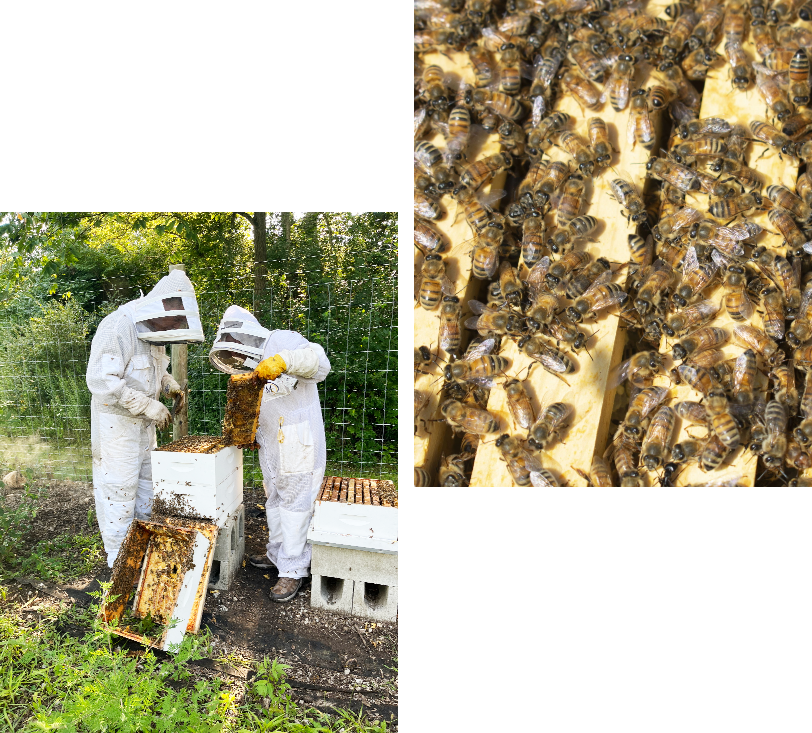
Bee Hive Restoration
Bee hive restoration and maintenance is underway at the Fondriest Center for Environmental Studies. What once was an empty box is now a bustling hive filled with healthy honey bees. In order to keep the hive healthy, members of the science team partnered with local beekeepers, Hive Noon, to maintain them. At the beginning of the restoration, the wild bees already had a good-sized population and a healthy queen. Where there were no frames before, the bees built their own. Once maintenance began, these walls of honeycombs were reshaped into new frames, preventing any future structural problems.
Every few weeks, the team checks in on the colony to confirm that the population is healthy and growing as expected. Treatment and monitoring of ailments and pests such as mites is conducted to prevent any population loss. When needed, maintenance and adjustments are made to the structure as well, such as adding a winter door to keep the bees safe in the colder weather.
Bees and other types of pollinators such as butterflies, bats and wasps are all crucial to protecting biodiversity and maintaining food sources for people and animals around the world.
Every few weeks, the team checks in on the colony to confirm that the population is healthy and growing as expected. Treatment and monitoring of ailments and pests such as mites is conducted to prevent any population loss. When needed, maintenance and adjustments are made to the structure as well, such as adding a winter door to keep the bees safe in the colder weather.
Bees and other types of pollinators such as butterflies, bats and wasps are all crucial to protecting biodiversity and maintaining food sources for people and animals around the world.
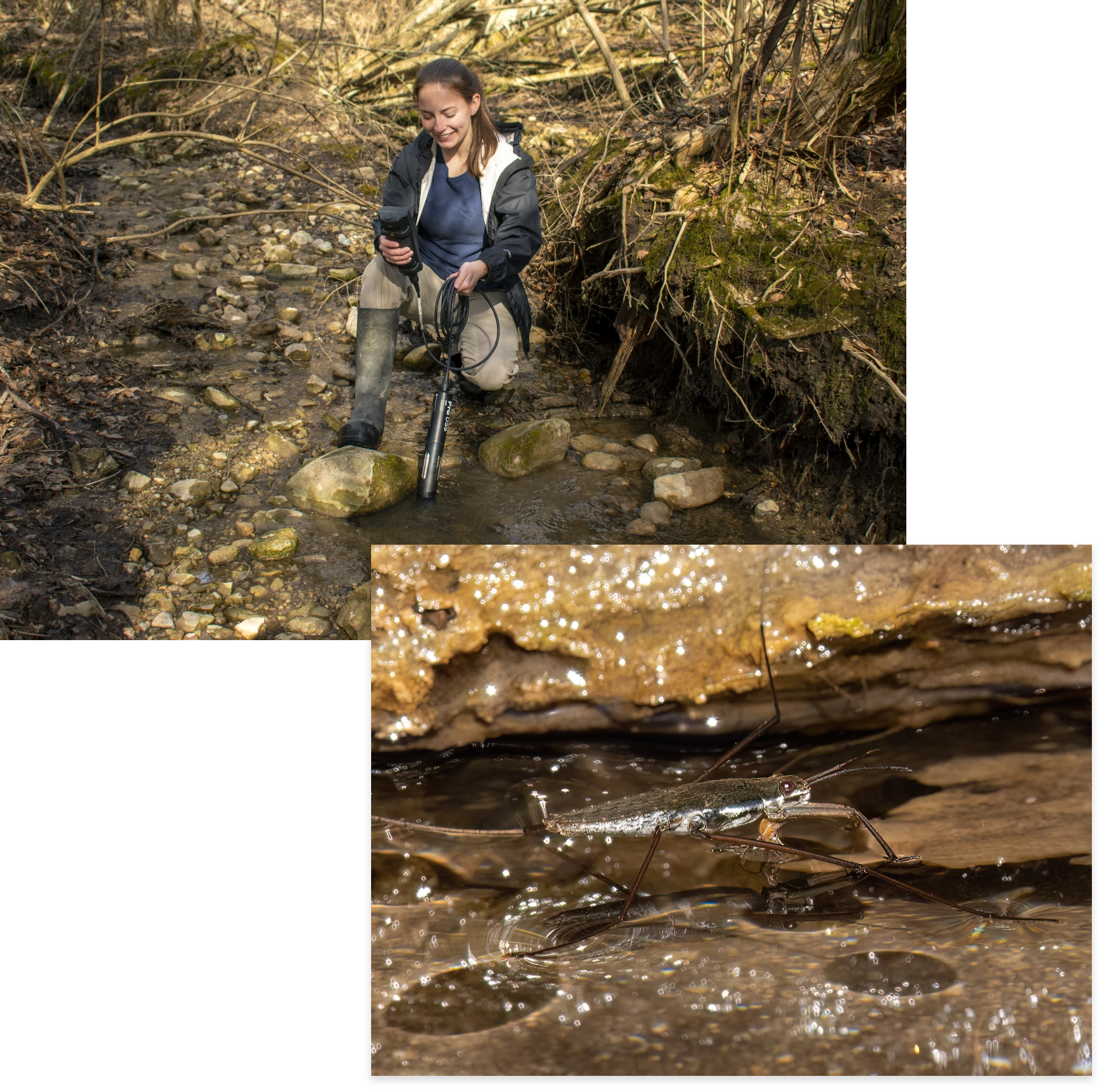
Stream Monitoring
Throughout the woods of the Fondriest Center for Environmental Studies, a small stream can be found connecting the surrounding Beavercreek Wetlands. Streams are important for local ecosystems and provide habitats, drinking water and food sources for many plants and animals. In addition to supporting local organisms, these small streams are also influential in nutrient and sediment retention and transportation.
Stream habitat surveys allow the science team to keep track of the life found in and around the stream, as well as help to target any problem areas. Macroinvertebrate studies can be conducted as well, showcasing what life is found in the stream before and after the restoration.
Litter cleanup has been an essential first step at tidying up the area, however the main initiative involves the use of water quality monitoring equipment. Various water conditions, such as unwanted chemicals, high nutrient levels, low dissolved oxygen content and more, all have major impacts on the health of a stream and can be the difference between a barren flow of water and an ecosystem teeming with life.
Stream habitat surveys allow the science team to keep track of the life found in and around the stream, as well as help to target any problem areas. Macroinvertebrate studies can be conducted as well, showcasing what life is found in the stream before and after the restoration.
Litter cleanup has been an essential first step at tidying up the area, however the main initiative involves the use of water quality monitoring equipment. Various water conditions, such as unwanted chemicals, high nutrient levels, low dissolved oxygen content and more, all have major impacts on the health of a stream and can be the difference between a barren flow of water and an ecosystem teeming with life.


View the Field Station Photo Gallery
View the Field Station
Photo Gallery
Photo Gallery
Want to explore more of what species can be found at the field station? View the full gallery below, hosted by WQData LIVE.


